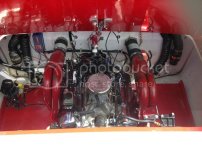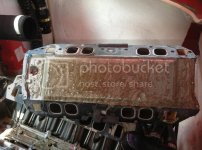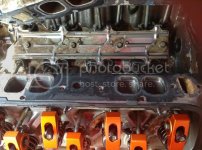Gimme Fuel
Well-known member
You gots some darn good parts there!
Welcome to the Checkmate Community Forums forums.
You are currently viewing our boards as a guest which gives you limited
access to view most discussions, articles and access to our other FREE features.
By joining our free community you will be able to:
Registration is fast, simple and absolutely free so please, join our community today!
If you have any problems with the registration process or your account login, please contact support by clicking here or by using the"contact us" link at the bottom of the page.
You gots some darn good parts there!

If it is a ZZ502 crate motor, the cam that came in those tends to have some reversion issues unless long tubes or dry are used.
Isn't everything better when its blown?

Well, since you are going to have the timing cover and what not off, pull the timing chain and look at the front of the cam and see if there is a part number. Then you will know exactly what you have. If it is that stock cam with that seperation, I would suggest changing it.
And if you are wanting to Procharge.... I might happen to have something in my garage you would be interested in..... and I might be able to be talked into letting it go for a really good price......
I may be wrong but if revertion was the problem I would think you would have hydrolocked the motor by now. Stuff brakes when trying to compress water. I would be very surprized if that is the cam in your boat. you can see the seat when the valve is open on the motor to check.
did he have water in the oil?right. Reversion doesn't necessarily mean enough water to hydrolock the cylinder. just a few drops here or there erode the valve seats causing leak down/compression loss and can also ruin piston rings. I had a buddy who just had to have his Tyler Crockett motor rebuilt last year due to reversion from silent choice. Motor ran decent up top but had absolutely no torque down low. Reversion was determined to be the cause. Solution was a rebuild and weld an extension on the inner water jacket of the end of the manifold riser (in your case header) to cause the exhaust to mix with water further down the exhaust. Also meant he had to remove silent choice.


